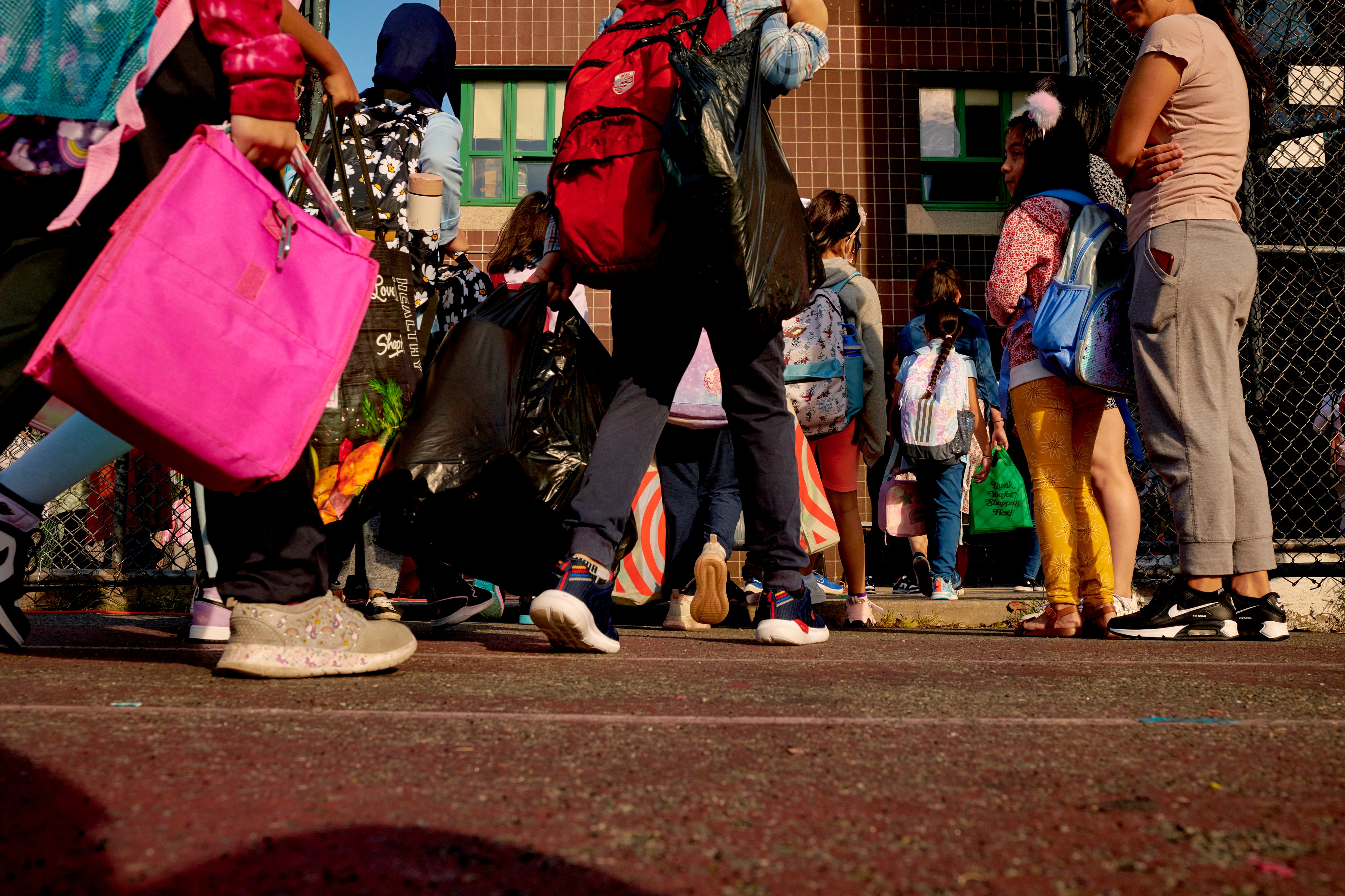Sign up for Chalkbeat New York’s free daily newsletter to keep up with NYC’s public schools.
New York City’s Education Department is seeking approval to spend $21 million over the next two years on an ad campaign to give families information about enrolling in public schools amid a steep decline in student headcount, according to city records.
The proposed contracts, which the city’s Panel for Educational Policy is expected to vote on Thursday, would pay an estimated $10.6 million a year over the next two years to four separate companies to create ads posted in buses and subways, bus shelters, phone kiosks, and small businesses.
The contract proposal cites systemwide enrollment losses due to the COVID pandemic and says “the advertising campaign aims to ensure that families are fully aware of the available enrollment options from 3K through High School.”
Paid ads also provide critical information to families about free meals programs, Summer Rising, and how to access information in languages other than English, said Education Department spokesperson Chyann Tull.
The city’s K-12 public school enrollment fell by more than 120,000 over the past five years, according to city figures. Enrollment in pre-kindergarten classes is also down significantly, and the city’s program for 3-year-olds has thousands of empty seats.
Schools Chancellor David Banks has repeatedly said that “winning back” families is a priority of his administration, and an Education Department spokesperson said “our communities called on us to do more marketing to get more families back into New York City Public Schools.” But some members of the Panel for Educational Policy are raising concerns about the effectiveness of ad campaigns as an enrollment strategy — and whether they’re the best use of city funds.
“I think it’s outrageously wasteful in terms of the money,” said panel member Effi Zakary at a Sept. 18 meeting of the contracts committee. “We need to at the very least see what was the effectiveness of previous advertisement efforts.”
Ad campaigns have been a staple of the city Education Department’s outreach efforts for years. Many private schools and charter schools, which have also struggled with enrollment during the pandemic, also aggressively advertise.
The department previously inked upwards of $13 million in contracts with the same four companies between 2019 and 2021, according to a review of city contracts. An Education Department spokesperson didn’t say exactly how much the city spent on the previous round of ad campaigns.
When the Education Department began rolling out its universal pre-K program in 2014, ads for the new program were ubiquitous, recalled Gregory Brender, the chief policy and innovation officer at the Day Care Council.
Education Department officials say ad campaigns are “both cost-effective in their outreach” and “quantifiable” in their impact, according to the contract proposal.
But they didn’t share such data publicly, and panel members said they’ve received few concrete details to indicate how effective those campaigns were.
“I have a hard time with the fact we’ve never really reviewed what our marketing, communication, advertising, has actually impacted in results,” said Sherée Gibson, a Queens panel member with a background in marketing, at the contract committee hearing.
Education Department officials told the panel members they would offer a special briefing on the contract before Thursday’s meeting, panel members said.
Jasmine Lake, a representative from the Education Department’s Family and Community Engagement office, or FACE, said the agency receives some high-level data from vendors on metrics like how many people walk by a given bus shelter where an ad is placed. The department is working on getting more granular data, including how many people used a QR code from a specific ad, as a way to target the ads more effectively, she said.
The goal of the upcoming ad campaign is to “increase in-person and digital traffic at enrollment centers and continue to provide greater admissions transparency,” according to the proposal.
FACE, the office that will largely coordinate the ad campaigns, has been roiled by internal tensions following its administration of the recent elections for Community Education Councils, which yielded a voter turnout of roughly 2%.
The enrollment challenges facing the city’s public schools are stark: in addition to the K-12 roster declines, enrollment in the widely lauded free pre-K program has shrunk by roughly 11,000 students over the course of the pandemic, and the recently expanded 3-K program had roughly 16,000 unfilled seats as of last year, according to Education Department estimates.
Many of the forces driving the enrollment declines are likely outside of the Education Department’s control.
The city’s birth rate began dropping long before the pandemic. Nearly 60,000 public school students left New York City altogether during the 2021-22 school year, a far greater number than in previous years. Many of those families departed for areas with far lower cost-of-living, according to Education Department data.
The agency’s official account on X, the platform formerly known as Twitter, sent out a message Tuesday warning that “if people can’t afford to live in New York City, they can’t send their kids to New York City Public Schools.”
Still, spreading the word about how to enroll in city schools can be a helpful first step, especially at the early childhood level where some families may still not know about the city’s free options. The city is also receiving an influx of asylum-seeking families, some of whom may not know they have the option to enroll their kids in school or how to do it.
“Generally, I think you need to approach it in multiple ways and advertising is one of them,” said Brender of efforts to boost enrollment in early childhood programs.
But he cautioned that the city will need to expand its efforts far beyond advertising in order to improve the enrollment process. Brender’s organization has recommended empowering community-based organizations that have existing relationships with families to enroll children in pre-K, rather than managing the process centrally.
Michael Elsen-Rooney is a reporter for Chalkbeat New York, covering NYC public schools. Contact Michael at melsen-rooney@chalkbeat.org.







